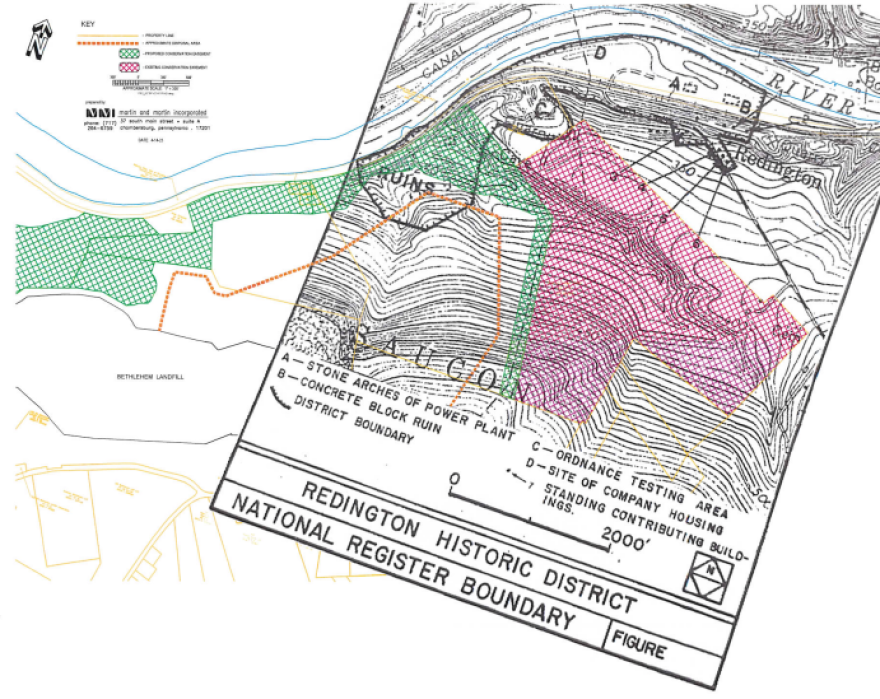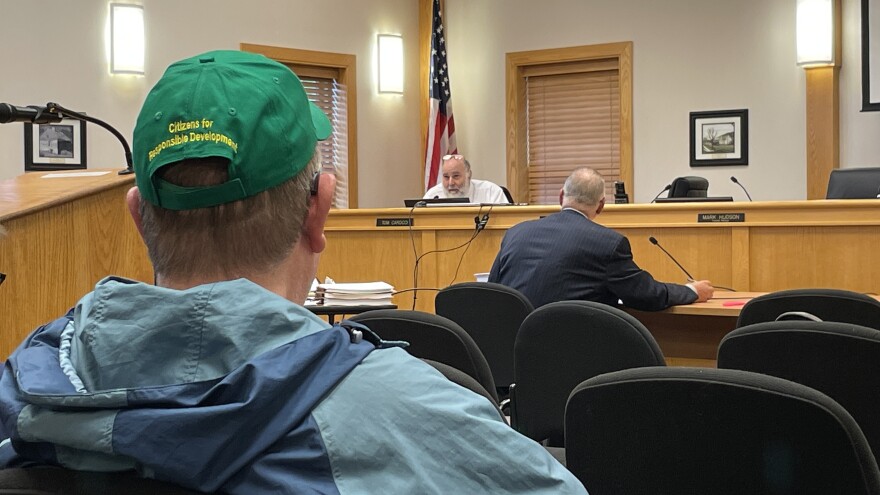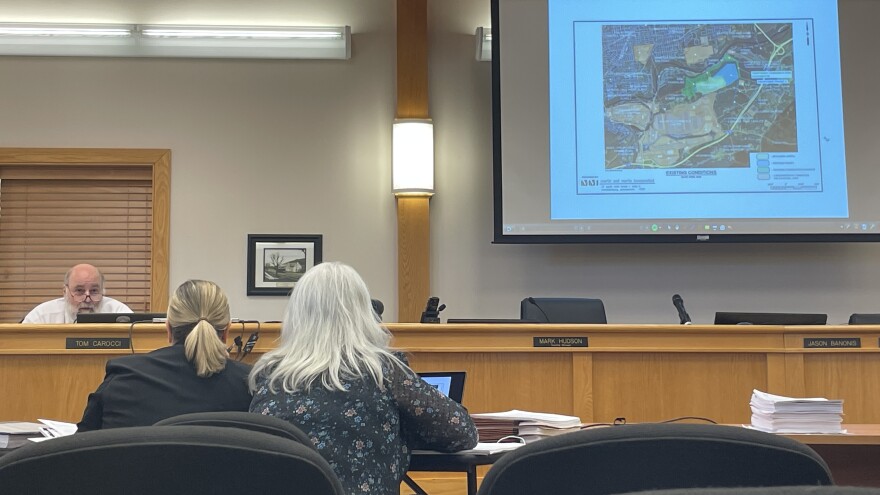LOWER SAUCON TWP., Pa. — Because a historic area near Bethlehem Landfill isn’t officially included in a national register, it’s open for redevelopment use, an expert on community planning and zoning said Friday at a hearing on the business' request to expand.
Charlie Schmehl, principal with the Bethlehem-based Urban Research and Development Corporation — a community planning and landscape architecture firm — weighed in on the discussion regarding conditional use compliance of the proposed expansion.
- The southern part of a historic area near Bethlehem Landfill would be affected by its potential expansion, an expert testified
- The Redington Historic District has been deemed eligible for placement on the National Register of Historic Places
- The next conditional use hearing will be from 9 a.m. to 4:30 p.m. Tuesday, May 9, at 3700 Old Philadelphia Pike
Schmehl said that since the Redington Historic District area is only eligible for the National Register of Historic Places and not actually part of it, there are no legal restrictions for redevelopment on that land as long as federal money is not used to fund the projects.

“Generally, the vast majority of the [historic] buildings are not on landfill property,” he said. “The disposal area, as you see, is only one small corner of the National Register-eligible district near the warden ruins.
“Much of the historic district is proposed to be preserved in a conservation easement for land that the landfill owns or controls.”''
'The cost of development'
The historic area south of the Lehigh River was primarily used for industrial operations in the 1800s, he said.
Bethlehem Steel used it for munitions testing at one point.
Later in the hearing, Gary Asteak, legal counsel for nearby residents, asked Schmehl if he recommended the expansion and its included deforestation.
Clearing space for a number of future progressive landfill expansions would be “the cost of development,” Schmehl answered.
Schmehl said that a majority of the proposed landfill expansion area would be considered for industrial use, and some of that land would be considered “open space.”
Industrial uses would “typically include” landfills, he added.
“Much of the area that is shown as ‘open space’ on the comprehensive plan would be protected by conservation easements under this proposed conditional use application,” Schmehl said.
He added that in between the landfill disposal area and the conservation easements, there are proposed covenants in place to require that land to be landscaped and not used for disposal operations.
"The conservation easements would provide substantial protection for the people in Steel City by preserving many of the woodlands between the existing landfill in Steel City, and preserving many of the woodlands along Riverside Drive to protect the Lehigh River and preserving many of the woodlands that would help protect the the adjacent Bull Run Creek."Charlie Schmehl, principal with Urban Research and Development Corporation
Effects on waterways, residents
Schmehl later elaborated on how the easements would affect nearby residents and waterways.
“The conservation easements would provide substantial protection for the people in Steel City by preserving many of the woodlands between the existing landfill in Steel City," he said.
"And preserving many of the woodlands along Riverside Drive to protect the Lehigh River and preserving many of the woodlands that would help protect the adjacent Bull Run Creek."
Schmehl made note of his background providing expert testimony and community planning knowledge for other projects and comprehensive plans around the region.
When asked of his experience regarding landfill-type matters, he said the “closest thing” to that was his eight years advising a quarry application for Lower Milford Township.
“Many of the same issues arose in that matter, with a whole series of Commonwealth Court issues and many, many hearings and many types of expert testimony by myself,” Schmehl said.
Surrounding uses
He made note of surrounding land uses near the landfill.
Those include an electric generating plant, 8-million square-foot Majestic Commerce Center, Lehigh Valley Industrial Park, the Steel City neighborhood of Lower Saucon Township among other “scattered” homes, motorcycle club, a major railroad line, the Lehigh River, Interstate 78 and also two natural gas pipelines running along the east side of the landfill property.
Schmehl referenced the Lower Saucon-Hellertown Joint Comprehensive Plan, adding that when the document was updated in 2022, the municipality counted on getting the host fees paid out by the landfill for its operations.
“The primary industrially oriented activity in the township is a landfill,” he read. “Current permitting, which generates a significant portion of the community’s non-resident tax income, is approaching expiration.
“Depending upon approval for facility expansion, the township may have to evaluate alternative sources of income.”

Thoughts from residents
Robert Kemmerer of Steel City said his concerns on the expansion surrounded health-related issues and property values.
Other residents of Steel City echoed his concerns, one of them being Russ Sutton.
I can’t see how beneficial it is when they accept out-of-state garbage.Russ Sutton, Steel City resident
While donning a green cap with yellow lettering that read "DUMP THE DUMP," Sutton spoke on how trash rolls into Bethlehem Landfill from other nearby states.
This means local residents don’t even get majority access of the facility use, he said.
“I can’t see how beneficial it is when they accept out-of-state garbage,” Sutton said.
The next conditional use hearing will take be from 9 a.m. to 4:30 p.m. Tuesday, May 9.


